Nothing says retro
better than a Volkswagen Beetle. The cute little car became the
darling of people on a budget in the 1960s through 1980s. And not
just in the U.S. There were probably more VW’s in Mexico, especially
Mexico City than anywhere else in the world. What made this little
car so special? To answer that is to take a trip back into a dark
page in human history.
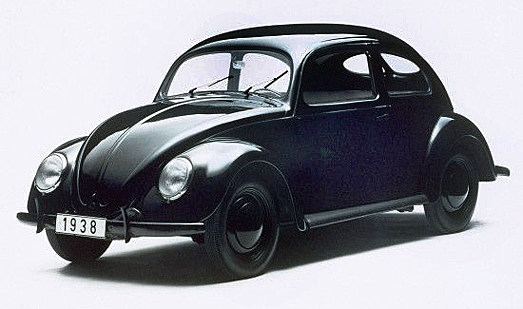
On May 28, 1937, a revolution of sorts occurred in the German auto
industry. In the early 1930s, cars were a luxury. Most Germans could
afford nothing more elaborate than a motorcycle. Only one German out
of 50 owned a car. On this day the Deutsche Arbeitsfront in Berlin,
under the control of Adolf Hitler of the Nazi Party, approved the
formation of a new state-owned automobile company, then known as
Gesellschaft zur Vorbereitung des Deutschen Volkswagens mbH. Later
that year, the government changed its name to Volkswagenwerk—“The
People’s Car Company.”
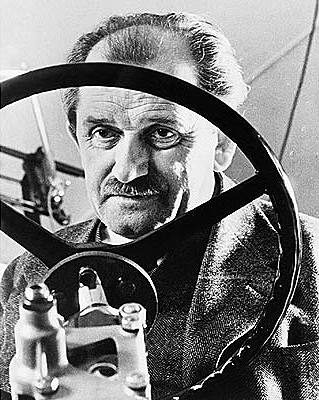 Originally
operated by the German Labor Front, a Nazi organization, Volkswagen
was headquartered in Wolfsburg, Germany. In addition to his
ambitious campaign to build a network of autobahns and limited
access highways across Germany, Hitler wanted to develop and mass
produce an affordable yet speedy vehicle that could sell for less
than 1,000 Reich marks—about $140 at the time. To provide the design
for this “people’s car,” Hitler called on Austrian automotive
engineer Ferdinand Porsche.
Originally
operated by the German Labor Front, a Nazi organization, Volkswagen
was headquartered in Wolfsburg, Germany. In addition to his
ambitious campaign to build a network of autobahns and limited
access highways across Germany, Hitler wanted to develop and mass
produce an affordable yet speedy vehicle that could sell for less
than 1,000 Reich marks—about $140 at the time. To provide the design
for this “people’s car,” Hitler called on Austrian automotive
engineer Ferdinand Porsche.
The concept of an inexpensive car wasn’t new. In fact, Béla Barényi
conceived the basic design in the mid-1920s. Josef Ganz developed
the Standard Superior, promoting it as the "German Volkswagen." In
Germany, the company Hanomag mass-produced the 2/10 PS "Kommissbrot",
a small, cheap rear-engine car, from 1925 to 1928.
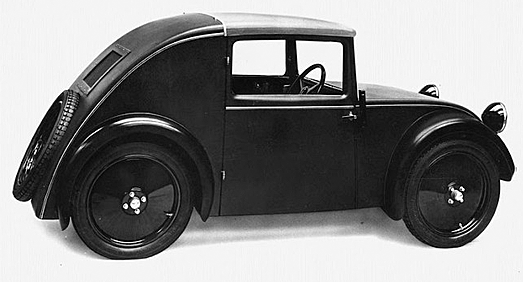
Porsche had been trying for years to get an auto manufacturer
interested in a small car suitable for a family. He built a car
named the "Volksauto" from the ground up in 1933, using many popular
ideas and several of his own, putting together a car with an
air-cooled rear engine, torsion bar suspension, and a "beetle"
shape, the front hood rounded for better aerodynamics, required for
a vehicle with a small engine.
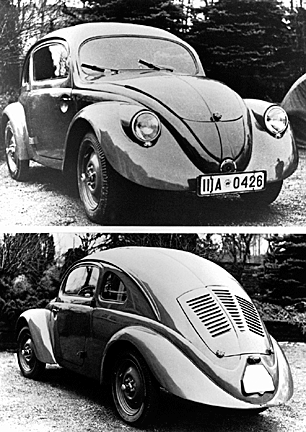 In
1934, Hitler ordered the production of this basic vehicle capable of
transporting two adults and three children at a top speed of 100
km/h (62 mph). He wanted all German citizens to have access to cars.
He decided to make the "People's Car" available to citizens of the
Third Reich through a savings plan at 990 Reichsmarks (US$396 in
1938 dollars)—about the price of a small motorcycle. The weekly wage
of a German then was 32 RM per week.
In
1934, Hitler ordered the production of this basic vehicle capable of
transporting two adults and three children at a top speed of 100
km/h (62 mph). He wanted all German citizens to have access to cars.
He decided to make the "People's Car" available to citizens of the
Third Reich through a savings plan at 990 Reichsmarks (US$396 in
1938 dollars)—about the price of a small motorcycle. The weekly wage
of a German then was 32 RM per week.
It soon became apparent that private industry couldn’t produce such
a car. So Hitler chose to sponsor an all-new, state-owned factory
using Ferdinand Porsche's design, with some of Hitler's design
constraints, including an air-cooled engine so nothing could freeze.
His intention was that ordinary Germans could buy the car by means
of a savings plan for 5 marks a week. Eventually about 336,000
Germans paid into this plan. However, the entire project was
financially unsound, and only the Nazi party made it possible by
providing funding.
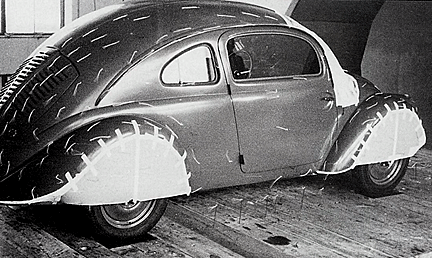 Prototypes
of the car called the "KdF-Wagen," or “Kraft durch Freude
vehicle---"Strength through Joy Car"---appeared in 1938. The car
already had its distinctive round shape and air-cooled, flat-four,
rear-mounted engine. The VW car was just one of many KdF programs,
which included things such as tours and outings.
Prototypes
of the car called the "KdF-Wagen," or “Kraft durch Freude
vehicle---"Strength through Joy Car"---appeared in 1938. The car
already had its distinctive round shape and air-cooled, flat-four,
rear-mounted engine. The VW car was just one of many KdF programs,
which included things such as tours and outings.
The VW was one of the first cars designed with the aid of a wind
tunnel—a method used for German aircraft design since the early
1920s. The car designs were put through rigorous tests and achieved
a record-breaking million miles of testing before being deemed
finished.
The construction of the new factory started in May 1938 in the new
town of "Stadt des KdF-Wagens,” now Wolfsburg, which had been
created for the factory workers. However, the factory had only
produced a handful of cars by the time World War II began in 1939.
It never delivered any to holders of the completed saving stamp
books.
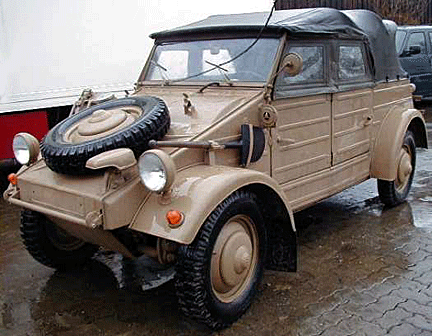 War
changed production to military vehicles. One of these was the Type
82 Kübelwagen, or "Bucket car" utility vehicle, Volkswagen wartime
model, manufactured for the German armed forces.
War
changed production to military vehicles. One of these was the Type
82 Kübelwagen, or "Bucket car" utility vehicle, Volkswagen wartime
model, manufactured for the German armed forces.
When the Allies began the occupation of Germany at the end of the
war, the Volkswagen factory lay in ruins. Though the American forces
captured the town and factory, both fell within the British
occupation zone. Thus, the VW factory came under the control of
British Army officer Major Ivan Hirst, who had become a civilian
Military Governor with the occupying forces.
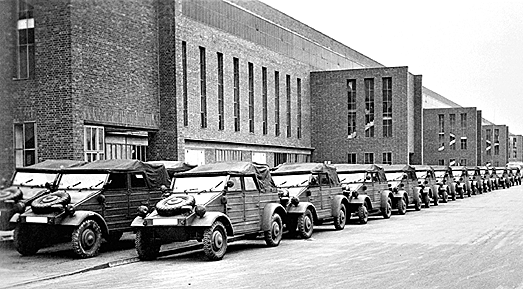
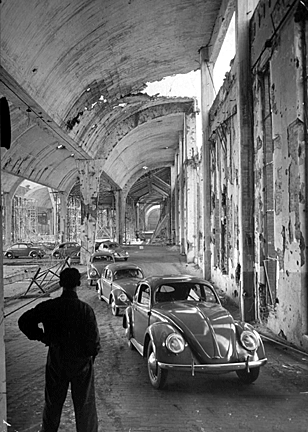 One
of the factory's wartime 'KdF-Wagen' cars had been taken to the
factory for repairs and had been abandoned there. Hirst had it
repainted green and demonstrated it to British Army headquarters.
Short of light transport, Hirst persuaded the British Army to place
an order for 20,000 cars. However, the factory was in no state to
produce the cars, there was a refugee crisis at and around the
factory, and some parts, such as carburetors, were unavailable.
Hirst and his German assistant Heinrich Nordhof helped to stabilize
the acute social situation while simultaneously re-establishing
production. Hirst, an engineer, arranged the manufacture of
carburetors, the original producers being effectively 'lost' in the
Russian zone.
One
of the factory's wartime 'KdF-Wagen' cars had been taken to the
factory for repairs and had been abandoned there. Hirst had it
repainted green and demonstrated it to British Army headquarters.
Short of light transport, Hirst persuaded the British Army to place
an order for 20,000 cars. However, the factory was in no state to
produce the cars, there was a refugee crisis at and around the
factory, and some parts, such as carburetors, were unavailable.
Hirst and his German assistant Heinrich Nordhof helped to stabilize
the acute social situation while simultaneously re-establishing
production. Hirst, an engineer, arranged the manufacture of
carburetors, the original producers being effectively 'lost' in the
Russian zone.
By 1946, the factory was producing 1,000 cars a month—a remarkable
feat considering it was still in disrepair. Owing to roof and window
damage, production had to stop when it rained, and the company had
to barter new vehicles for steel for production. Hirst changed the
names of the car and its town to "Volkswagen" and "Wolfsburg"
respectively, and production increased.
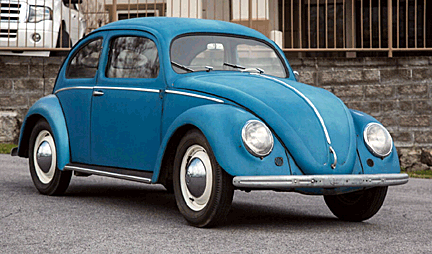
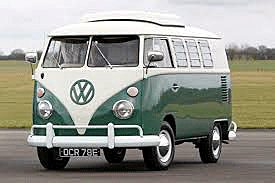 The
first few hundred cars went to personnel from the occupying forces,
and to the German Post Office. And when demobilization ended, some
British Service personnel took their Beetles back to the United
Kingdom with them.
The
first few hundred cars went to personnel from the occupying forces,
and to the German Post Office. And when demobilization ended, some
British Service personnel took their Beetles back to the United
Kingdom with them.
Between 1948 and 1961, the Volkswagen became the icon of post-war
Germany. In 1949, Major Hirst left the company—now reformed as a
trust controlled by the governments of both West Germany and the
State of Lower Saxony. The factory produced the standard "Beetle" or
"peoples' car," designated as the Type 1, as well as . Volkswagen
Type 2 commercial vehicle---van, pick-up, and camper, and the VW
Karmann Ghia sports car,
And the rest, as they say, is history.
